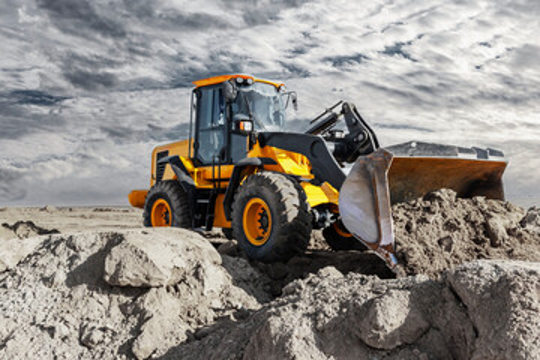

Excavation and Trenching
An excavation refers to any human-created cut, cavity, trench, or depression formed by removal of earth material.
A trench is a type of narrow excavation that is less than 15 feet wide and with a depth typically no greater than the width. Excavation and trenching commonly occurs during construction activities, such as when foundations are made for buildings, or when trenches are dug for utility lines.
Excavations and trenches can pose hazards to those working inside of the excavation and people walking or working near the excavation. Examples of hazards include cave-ins, collapses, falling materials or equipment, working in close proximity to vehicle traffic, and hazards from utilities, such as electricity or gas. Excavations also have the potential to compromise the structural safety and integrity of nearby buildings and other structures. Careful planning and coordination is essential to protecting the safety of people and property during an excavation or trenching operation.
For more information on the requirements and safety precautions for excavation, trenching, and operation of earth moving vehicles, please review the Excavation, Trenching and Earth-Moving Vehicles Procedure.
Excavation Safety Guidelines:
- Maryland Miss Utility must be notified prior to any excavation or trenching operation at 800-257-7777 (or 811).
- Contractors may not perform excavation or trenching at UMBC without prior authorization from and coordination with Facilities Management.
- Trenches or excavations require a form of fall protection (i.e., guardrails) when personnel will be working within 15 feet of the edge of an excavation or trench that is four (4) feet deep or greater.
- All excavations must be appropriately protected against cave-ins, either through sloping, shoring or shielding.
- Do not enter an excavation or trench with standing water or hazardous atmospheres, or during periods of prolonged or heavy precipitation.
- A safe means to enter and exit an excavation must be in place.
- Keep all materials and spoil piles at least two (2) feet away from the edge of the excavation.
- Always wear the appropriate personal protective equipment.
Earth-moving vehicles are used to perform excavation and trenching activities. Common examples include excavators, backhoes, dumpers, tractors, loaders, and graders.
General Requirements:
- Only trained, authorized UMBC employees are permitted to operate earth-moving vehicles.
- Contractors and other third-party entities may not borrow or operate a UMBC-owned or leased vehicle.
- Perform a pre-use inspection of the vehicle at the beginning of each day to ensure all parts of the vehicle are functioning properly.
- Do not leave vehicles unattended unless they have the keys removed or have been immobilized.
- Engage the parking brake when not in use, and chock the wheels when parking on an incline.
- Use a flagger or signal person if rear view is obstructed.
Earth Moving Vehicles

Earth-moving vehicles are used to perform excavation and trenching activities. Common examples include excavators, backhoes, dumpers, tractors, loaders, and graders.
General Requirements:
- Only trained, authorized UMBC employees are permitted to operate earth-moving vehicles.
- Contractors and other third-party entities may not borrow or operate a UMBC-owned or leased vehicle.
- Perform a pre-use inspection of the vehicle at the beginning of each day to ensure all parts of the vehicle are functioning properly.
- Do not leave vehicles unattended unless they have the keys removed or have been immobilized.
- Engage the parking brake when not in use, and chock the wheels when parking on an incline.
- Use a flagger or signal person if rear view is obstructed.